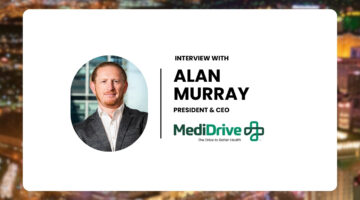
AI is showing great promise in healthcare, but there’s one key opportunity that seems to be missing in these conversations: employer-sponsored healthcare. That’s according to Morgan Health, a JPMorgan Chase business unit focused on employer-sponsored insurance, which released a report on Friday on how AI can support this area.
“Half of the U.S. population is covered by employer-sponsored insurance, and we saw a need for more specifics and granularity on how stakeholders in the commercial sector can work collaboratively to apply AI in a meaningful and targeted way,” said Emily Lindemer, PhD and executive director of data at Morgan Health, in an email.
Here are five ways AI can improve employer-sponsored healthcare, according to the report:

As Healthcare and Biopharma Companies Embrace AI, Insurance Underwriters See Risks and Opportunities
In an interview, Munich Re Specialty Senior Vice President Jim Craig talked about the risk that accompanies innovation and the important role that insurers play.
1. Patient navigation: Patients often struggle finding the care they need, and employers regularly struggle offering personalized support to their employees and have low engagement in their health benefits. AI can help this by using patients’ medical history to match them with the right care.
However, AI is still in its early stages when it comes to patient navigation, and advancements are needed.
“To drive meaningful change in this area, the industry needs to make improvements to its data infrastructure – starting with interoperability,” the report stated. “More collaboration needs to take place across the entire health care system, including employers, insurance carriers, providers and vendors. All parties have different types of and levels of access to patient health histories.”
2. Identify and mitigate bias and risks: AI has the potential to provide employers with better insights into the future needs of their employees. For instance, AI can present a more advanced model for predicting how complex conditions — such as diabetes and heart disease — may affect their population over the long term.

NEMT Partner Guide: Why Payers and Providers Should Choose MediDrive’s TMS
Alan Murray on improving access for medical transportation.
However, there are some challenges to this, as “many aspects of an individual’s true health (e.g. physical, mental and social) are not accurately reflected in the data that are recorded due to the systemic disparities within our health care system,” Morgan Health said.
3. Billing and administrative efficiency: Billing errors can be avoided by automating billing and coding. This prevents “both employers and patients from having to deal with the administrative stress and burden of manual remediation, which often consists of lengthy processes to review and fix errors,” according to the report. AI can also provide more real-time transparency into a patient’s point-in-time insurance deductible status.
4. Freeing up providers’ time: Quality care is a major priority for employers. Provider efficiency tools like ambient documentation and medical record summarization allow providers to spend more time with patients.
“Frequently, patients share frustrations that their providers simply do not spend enough time understanding their needs and providing guidance on how they can improve their health,” the report stated. “Thus, it’s important that these AI-powered tools are coupled with value-based contracts that prioritize the quality of patient-provider interactions (versus number of patients seen). Leaving AI-driven efficiency unchecked has the potential to push providers to simply see more patients if AI allots them more time, instead of providing higher quality care to their patients.”
5. Clinical decision support: AI can also provide higher quality care by taking healthcare information and translating it to inform clinical decisions. This helps providers spend more time with patients and makes the clinical decision-making process more efficient.
“Some of these tools are already on the market and are being reimbursed at higher rates than human clinicians, which will increase costs in the short-term,” the report said. “However, the widely held belief is that these tools could ultimately provide downstream cost savings in the future (when scaled and implemented appropriately).”
Photo: Sylverarts, Getty Images






